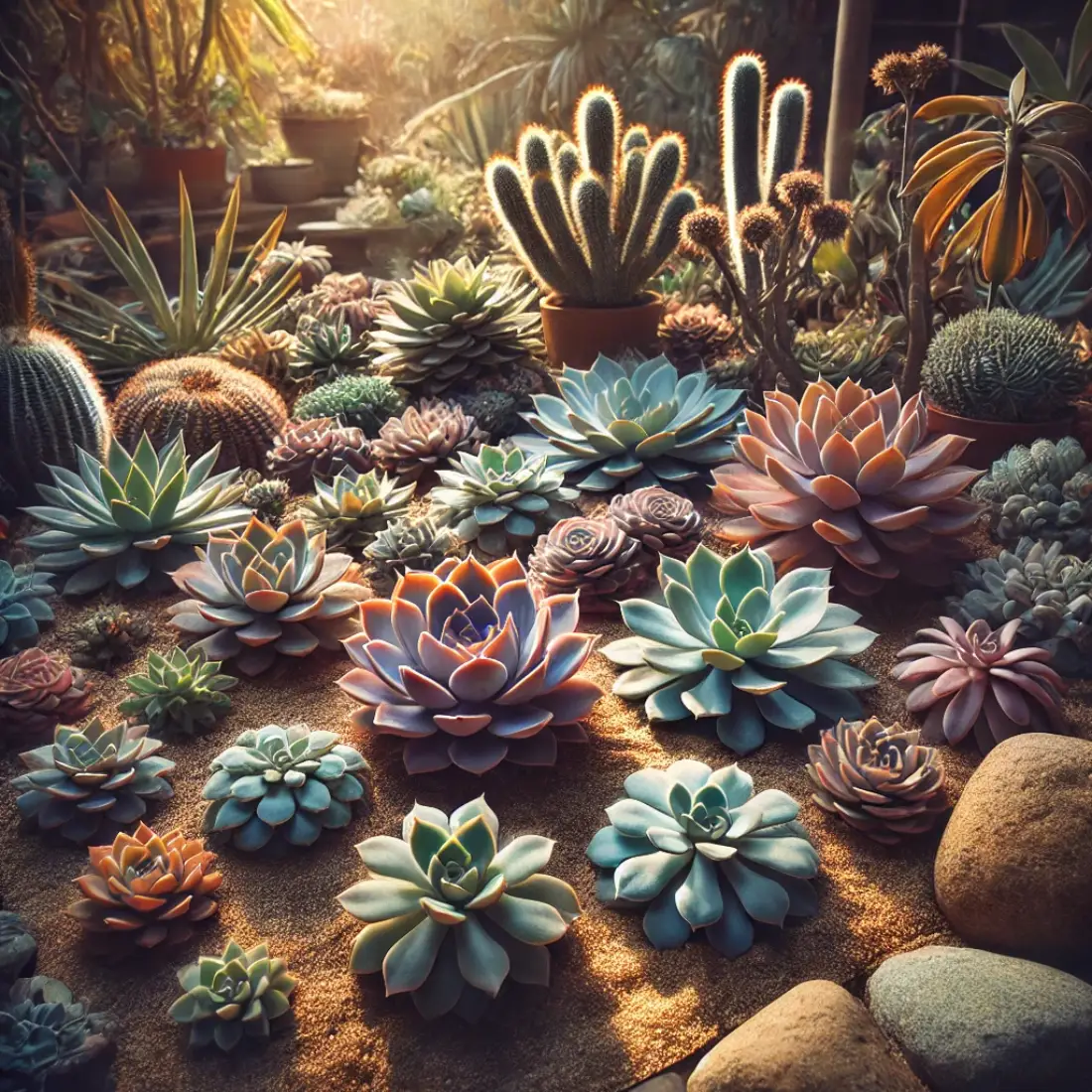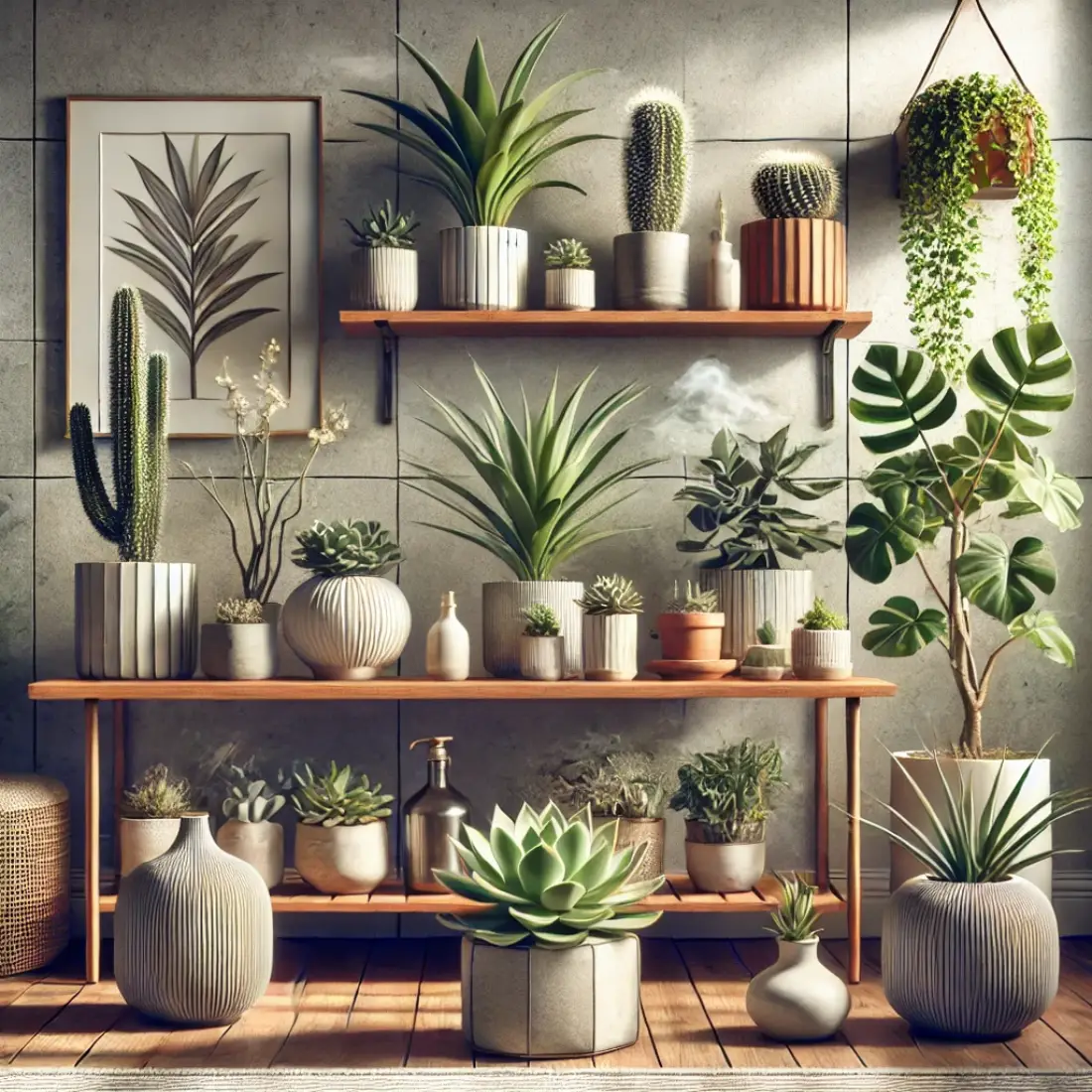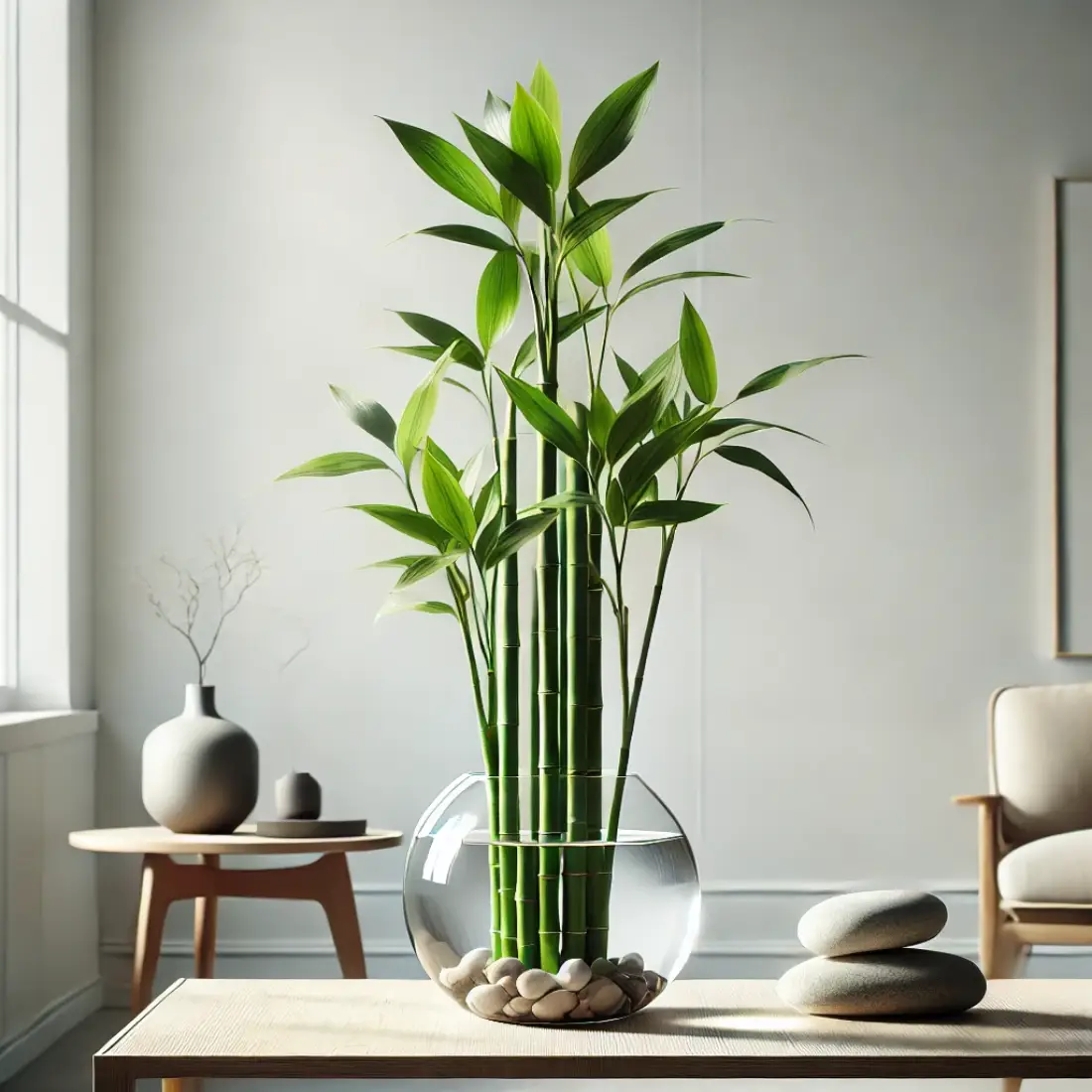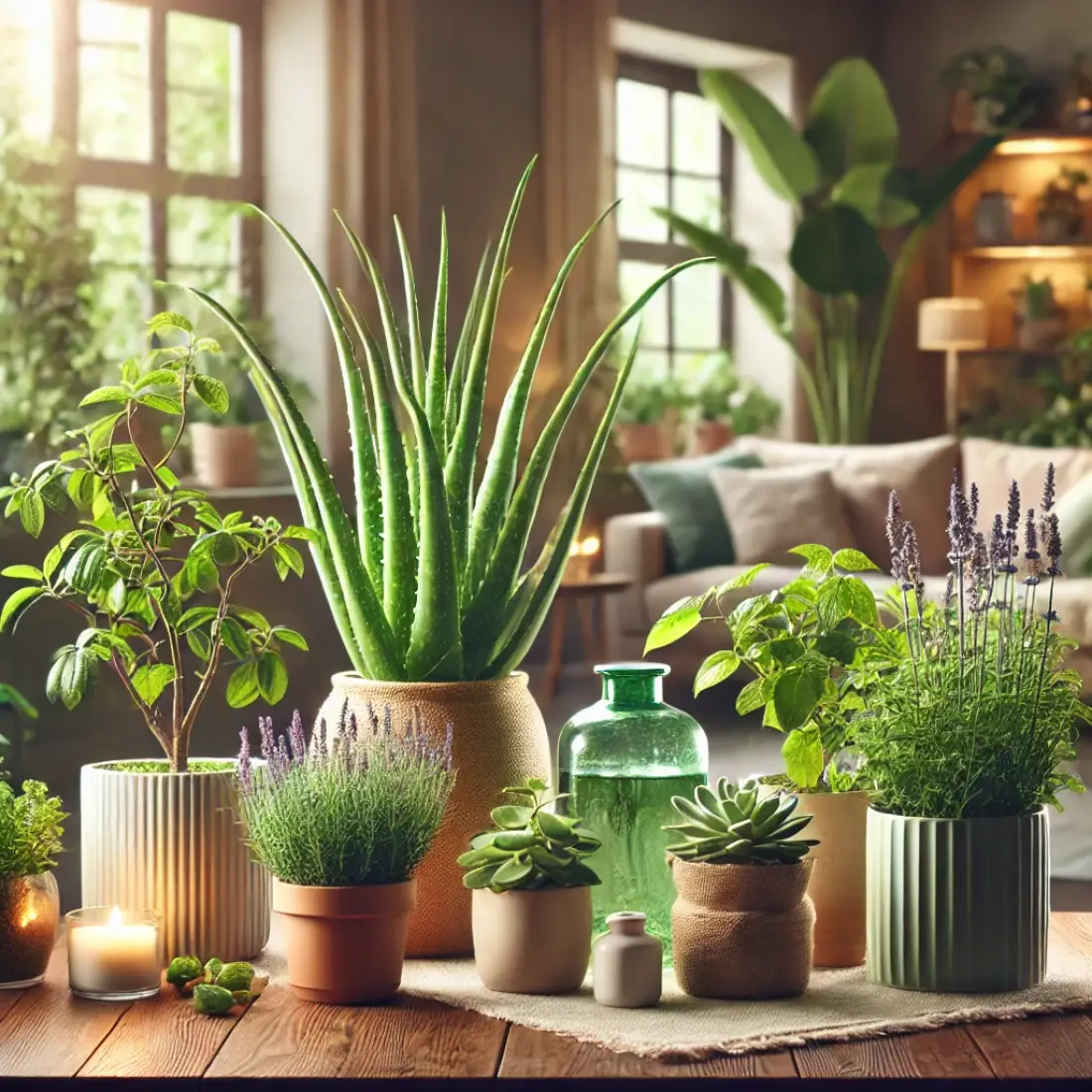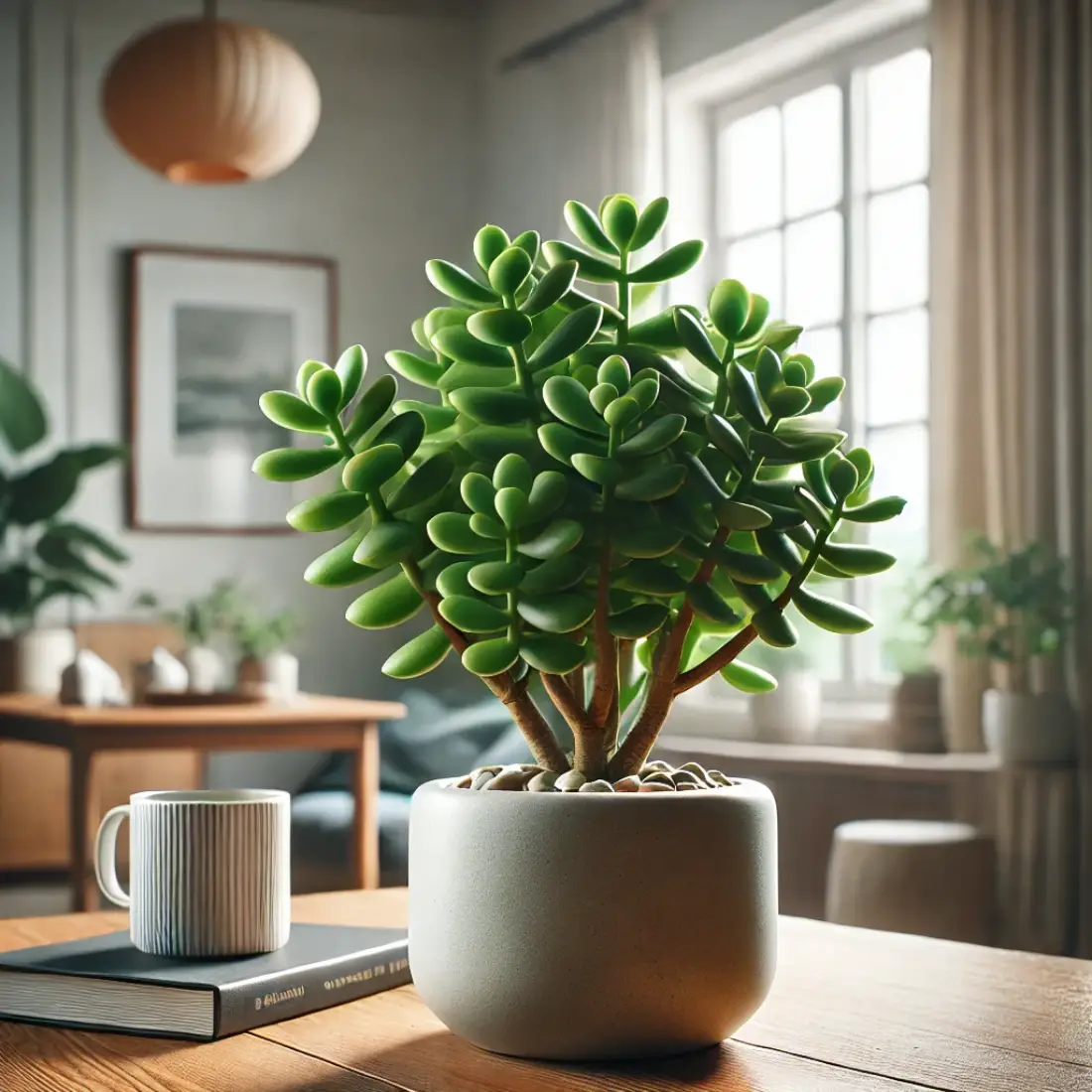Echeveria, a popular genus of succulents, is cherished by gardeners and indoor plant enthusiasts for its stunning rosette shapes and vibrant colors. Native to semi-desert areas of Central America, Echeveria thrives in environments that mimic its natural habitat.
These hardy plants are perfect for beginners due to their low maintenance needs and adaptability to various growing conditions.
- Easy-to-care-for succulent
- Ideal for beginners
- Requires minimal watering
- Needs plenty of sunlight
Benefits of Growing Echeveria
Echeveria offers several benefits that make it a favorite among gardeners and indoor plant enthusiasts. First and foremost, their aesthetic appeal is undeniable. With vibrant rosettes in various colors and sizes, Echeveria adds a touch of elegance to any space.
Secondly, they are low maintenance, making them ideal for beginners or those with a busy lifestyle. These succulents require minimal watering and care, thriving even with a bit of neglect. Additionally, Echeveria has air-purifying qualities, helping to improve indoor air quality by removing toxins.
Their ability to adapt to different growing conditions, whether indoors or outdoors, adds to their versatility. Lastly, Echeveria can be easily propagated, allowing gardeners to expand their collection or share with friends.
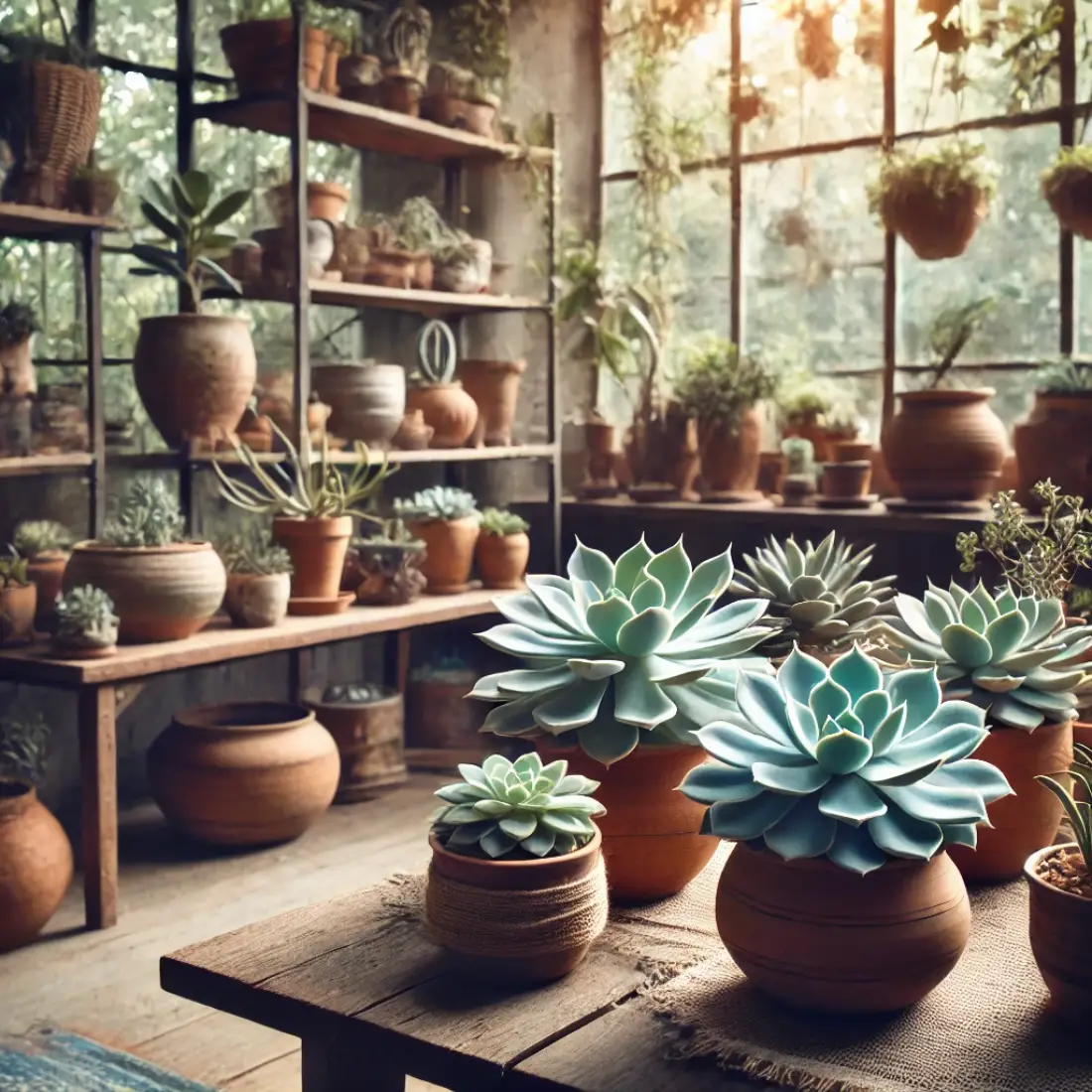
Choosing the Right Echeveria for Your Space
Selecting the right Echeveria for your space involves considering several key factors to ensure the plant thrives in its environment.
Light Conditions: Echeveria varieties have different light requirements. For instance, Echeveria ‘Perle von Nurnberg’ thrives in bright, indirect sunlight, making it perfect for well-lit indoor spaces. On the other hand, Echeveria ‘Lola’ can tolerate partial shade, suitable for areas with less light.
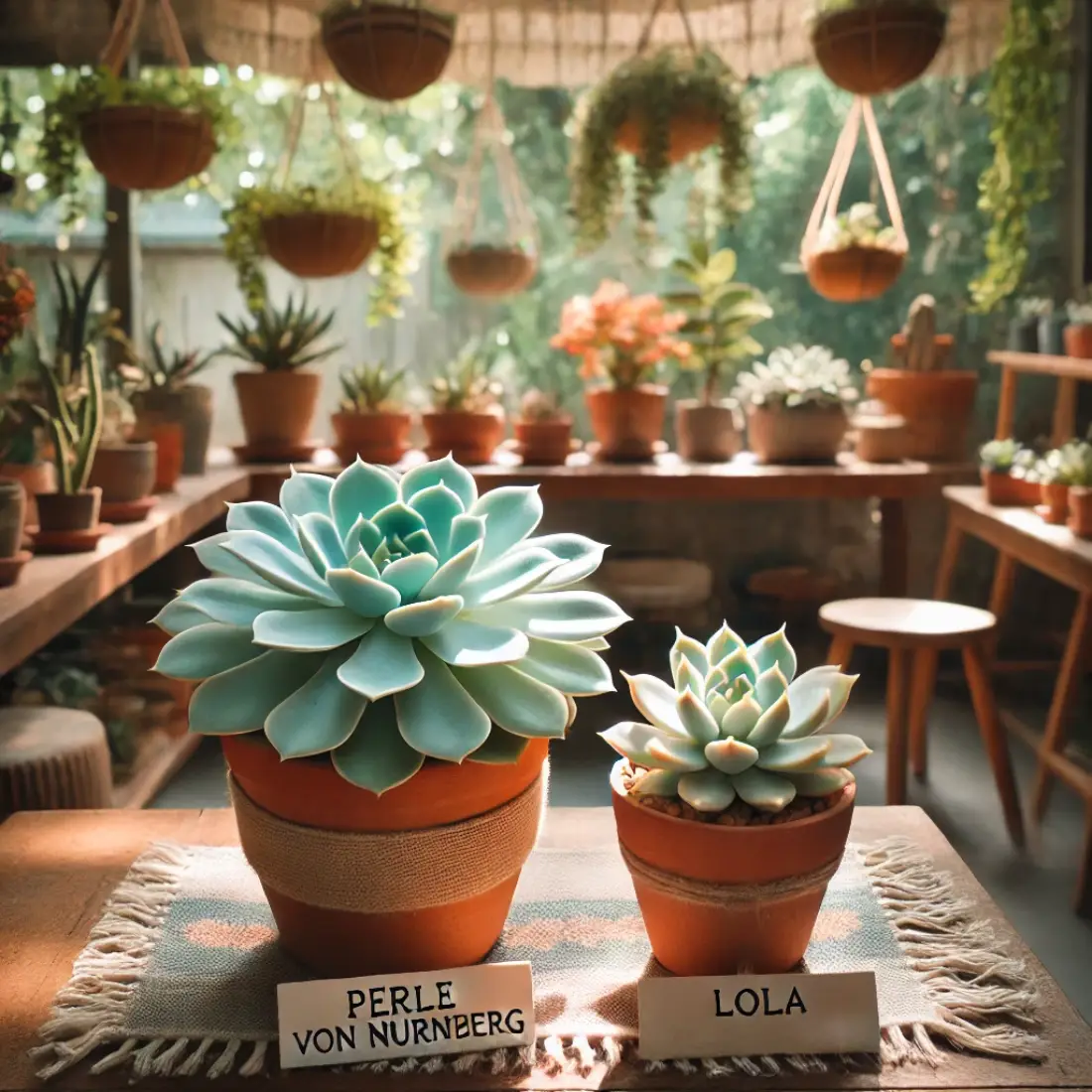
Size: Echeveria comes in various sizes, from compact types like Echeveria ‘Minima’ to larger varieties like Echeveria ‘Imbricata.’ For small spaces or window sills, choose compact varieties. Larger varieties are ideal for outdoor gardens or spacious indoor areas.
Climate: Consider your local climate when choosing an Echeveria. Varieties like Echeveria ‘Black Prince’ can tolerate cooler temperatures, while Echeveria ‘Doris Taylor’ prefers warmer, arid conditions.
Aesthetic Preferences: With a wide range of colors and shapes, Echeveria can complement any decor. Echeveria ‘Afterglow’ with its purple-pink hues can add a pop of color, while Echeveria ‘Elegans’ offers a more subdued, elegant look.

Ideal Growing Conditions for Echeveria
Light Requirements: Echeveria needs plenty of bright, indirect sunlight. Aim for at least six hours of sunlight daily, ideally near a south or east-facing window. If grown outdoors, provide partial shade to protect it from intense midday sun, which can scorch the leaves.
Temperature and Humidity: Echeveria prefers warm temperatures, ideally between 65-80°F (18-27°C). While they can tolerate cooler temperatures, anything below 40°F (4°C) can damage the plant. Humidity levels should be low to moderate. High humidity can lead to fungal diseases and rot. Ensure good air circulation to prevent excess moisture buildup.
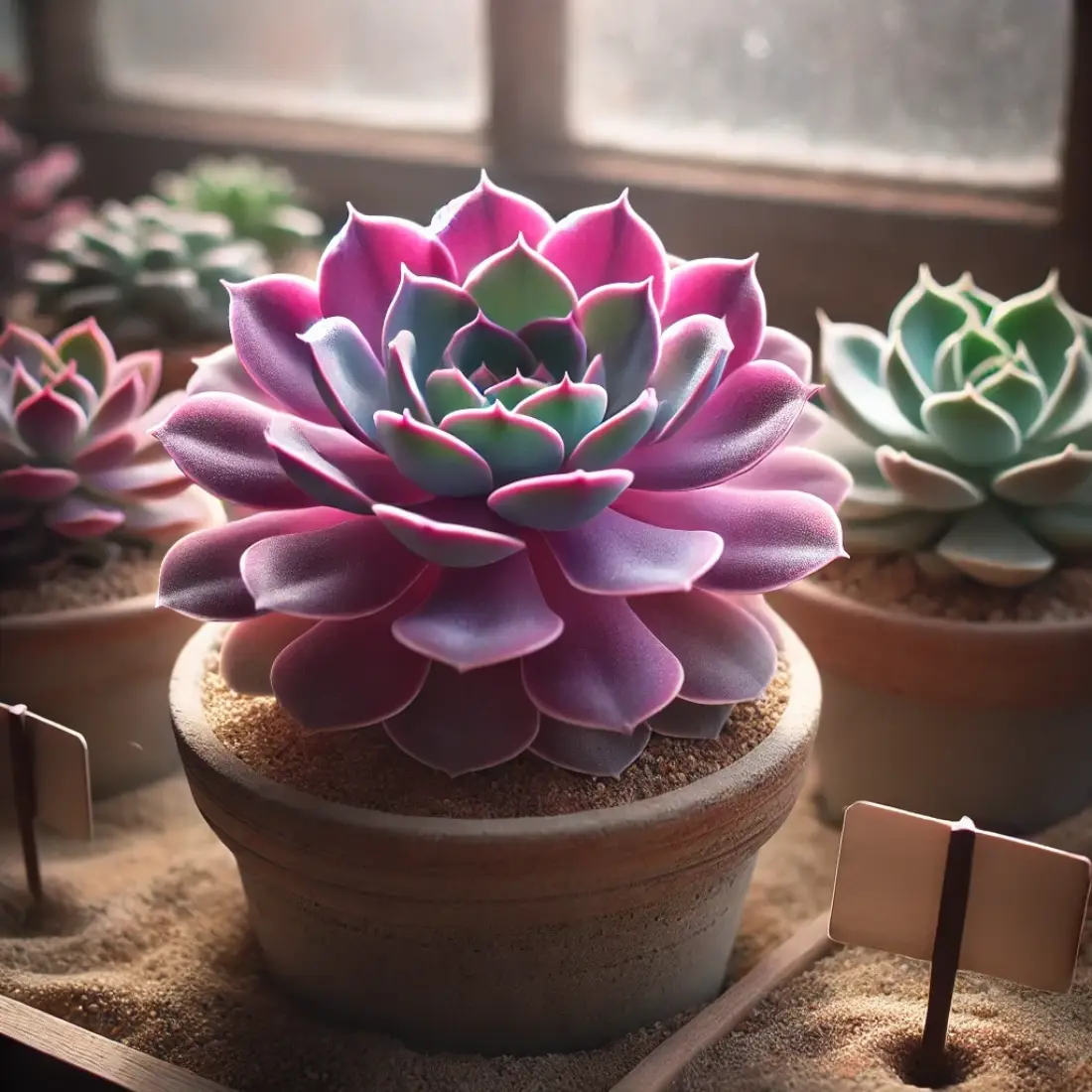
Soil Preferences: Echeveria thrives in well-draining soil. Use a cactus or succulent mix, or create your own by mixing regular potting soil with sand or perlite to improve drainage. The soil should be slightly acidic to neutral, with a pH level between 6.0 and 7.0.
Watering Needs: Echeveria has low water requirements. Water the plant thoroughly but infrequently, allowing the soil to dry out completely between waterings. Overwatering is the most common cause of problems, leading to root rot. Use the “soak and dry” method to keep the roots healthy.
Pot Selection: Choose a pot with drainage holes to prevent water from accumulating at the bottom. Terra cotta pots are ideal as they allow excess moisture to evaporate, keeping the soil dry.
Planting Echeveria: Step-by-Step Guide
Planting Echeveria is a straightforward process that can be highly rewarding. Follow these steps to ensure your Echeveria gets off to the best possible start.
1. Select the Right Pot:
- Choose a pot with drainage holes to prevent water accumulation.
- Terra cotta pots are recommended as they allow for better air circulation and moisture evaporation.
2. Prepare the Soil:
- Use a well-draining soil mix, such as a commercial cactus or succulent mix.
- You can create your own by mixing regular potting soil with sand, perlite, or pumice in a 1:1 ratio to improve drainage.
3. Potting the Plant:
- Fill the pot halfway with the prepared soil mix.
- Gently remove the Echeveria from its nursery pot, taking care not to damage the roots.
- Place the plant in the center of the new pot, ensuring it sits at the same depth as in the nursery pot.
4. Add Soil:
- Fill around the plant with additional soil mix, pressing gently to secure it in place.
- Leave a small gap at the top of the pot to allow for watering.
5. Initial Watering:
- After planting, wait a day or two before watering to allow the roots to settle.
- Water the Echeveria thoroughly, ensuring the water drains out completely.
6. Placement:
- Place the pot in a location with plenty of bright, indirect sunlight. A south or east-facing window is ideal.
- If planting outdoors, choose a spot that receives partial shade during the hottest part of the day.
7. Ongoing Care:
- Allow the soil to dry out completely between waterings.
- Check the plant regularly for signs of overwatering, such as yellowing leaves or mushy stems.
- Fertilize sparingly during the growing season with an organic fertilizer. Options like compost tea, worm castings, or seaweed extract are ideal.
Caring for Echeveria
Proper care is essential to ensure your Echeveria thrives.
Watering Echeveria: How Much and How Often
Watering Frequency:
- Water Echeveria thoroughly but infrequently.
- Allow the soil to dry out completely between waterings.
- During the growing season (spring and summer), water every 1-2 weeks.
- In the dormant season (fall and winter), reduce watering to once a month or less.
Signs of Overwatering and Underwatering:
- Overwatering: Mushy, yellow leaves, and potential root rot.
- Underwatering: Wrinkled, shriveled leaves.
Seasonal Watering Tips:
- Adjust the watering schedule based on the season and indoor conditions.
- Use the “soak and dry” method to prevent root rot.
Fertilizing Echeveria: When and How to Do It
Types of Fertilizers:
- Use a balanced, water-soluble organic fertilizer diluted to half strength.
- Fertilize during the growing season (spring and summer).
- Avoid fertilizing in the dormant season to prevent stress on the plant.
Dos and Don’ts:
- Do: Apply fertilizer sparingly and follow package instructions.
- Don’t: Over-fertilize, as it can lead to weak, leggy growth.
Pruning and Propagating Echeveria
Pruning Tips and Techniques:
- Remove dead or damaged leaves to encourage healthy growth.
- Prune leggy growth to maintain a compact shape.
Propagation Methods:
- Leaf Cuttings: Gently twist off a healthy leaf and allow it to be callus for a few days before placing it on well-draining soil.
- Offsets: Remove small rosettes (pups) that grow around the base of the plant and replant them.
- Seeds: Sow seeds on the soil surface and mist lightly, keeping the soil moist until germination.
Common Mistakes to Avoid:
- Overwatering newly propagated cuttings.
- Failing to let cuttings callus before planting, which can lead to rot.
Troubleshooting Common Issues
Even with proper care, Echeveria can sometimes face problems.
Identifying Common Pests:
- Aphids: Small, green or black insects that cluster on new growth and undersides of leaves.
- Mealybugs: White, cotton-like pests that appear in leaf axils and along stems.
- Spider Mites: Tiny, red or brown insects that create fine webbing on the plant.
Disease Prevention and Treatment:
- Root Rot: Caused by overwatering. Symptoms include black, mushy roots, and wilting leaves. Remedy by reducing watering frequency and repotting in dry soil.
- Fungal Infections: Marked by spots or mildew on leaves. Treat with fungicide and improve air circulation.
Natural remedies include neem oil, insecticidal soap, and diluted rubbing alcohol.
Solving Common Growth Problems
Etiolation (Stretching):
- Cause: Insufficient light.
- Solution: Move the plant to a brighter location where it can receive at least six hours of indirect sunlight daily. Prune stretched growth to encourage compactness.
Leaf Drop:
- Cause: Overwatering or sudden temperature changes.
- Solution: Adjust watering schedule to allow the soil to dry out between waterings. Ensure the plant is in a stable temperature environment.
Root Rot:
- Cause: Prolonged exposure to wet soil.
- Solution: Remove the plant from its pot, trim away affected roots, and repot in fresh, well-draining soil. Reduce watering frequency and ensure proper drainage.
FAQs About Echeveria
How often should I water my Echeveria?
Water Echeveria thoroughly but infrequently, allowing the soil to dry out completely between waterings. Typically, this means watering every 1-2 weeks during the growing season and once a month or less during the dormant season.
Why are my Echeveria leaves falling off?
Leaf drop can be caused by overwatering, sudden temperature changes, or insufficient light. Adjust your watering schedule, ensure the plant is in a stable environment, and provide adequate sunlight.
Can Echeveria survive indoors without direct sunlight?
Echeveria prefers bright, indirect sunlight. While it can survive in lower light conditions, it may become leggy and lose its vibrant colors. Place your Echeveria near a south or east-facing window for optimal growth.
How do I propagate Echeveria?
Echeveria can be propagated through leaf cuttings, offsets (pups), or seeds. Leaf cuttings and offsets are the most common methods, involving removing and planting healthy leaves or small rosettes from the parent plant.
What type of soil is best for Echeveria?
Echeveria thrives in well-draining soil, such as a cactus or succulent mix. You can also create your own mix by combining regular potting soil with sand, perlite, or pumice in a 1:1 ratio.
How can I prevent root rot in Echeveria?
To prevent root rot, use a well-draining soil mix, choose a pot with drainage holes, and allow the soil to dry out completely between waterings. Avoid overwatering and ensure good air circulation around the plant.
What should I do if my Echeveria gets too tall and leggy?
Leggy growth, or etiolation, occurs when Echeveria doesn’t receive enough light. Move the plant to a brighter location and prune the stretched growth to encourage a more compact shape.
How can I tell if my Echeveria is getting enough light?
Echeveria receiving adequate light will have vibrant colors and compact growth. If the plant becomes pale, stretched, or leggy, it likely needs more light. Place it in a spot with at least six hours of indirect sunlight daily.
Are there any natural remedies for pests on Echeveria?
Yes, natural remedies such as neem oil, insecticidal soap, and diluted rubbing alcohol can effectively treat common pests like aphids, mealybugs, and spider mites. Apply these treatments regularly until the pests are eliminated.
Can I grow Echeveria outdoors year-round?
Echeveria can be grown outdoors in warm climates with mild winters. In colder regions, it’s best to bring the plants indoors during the winter months or protect them from frost and freezing temperatures.

